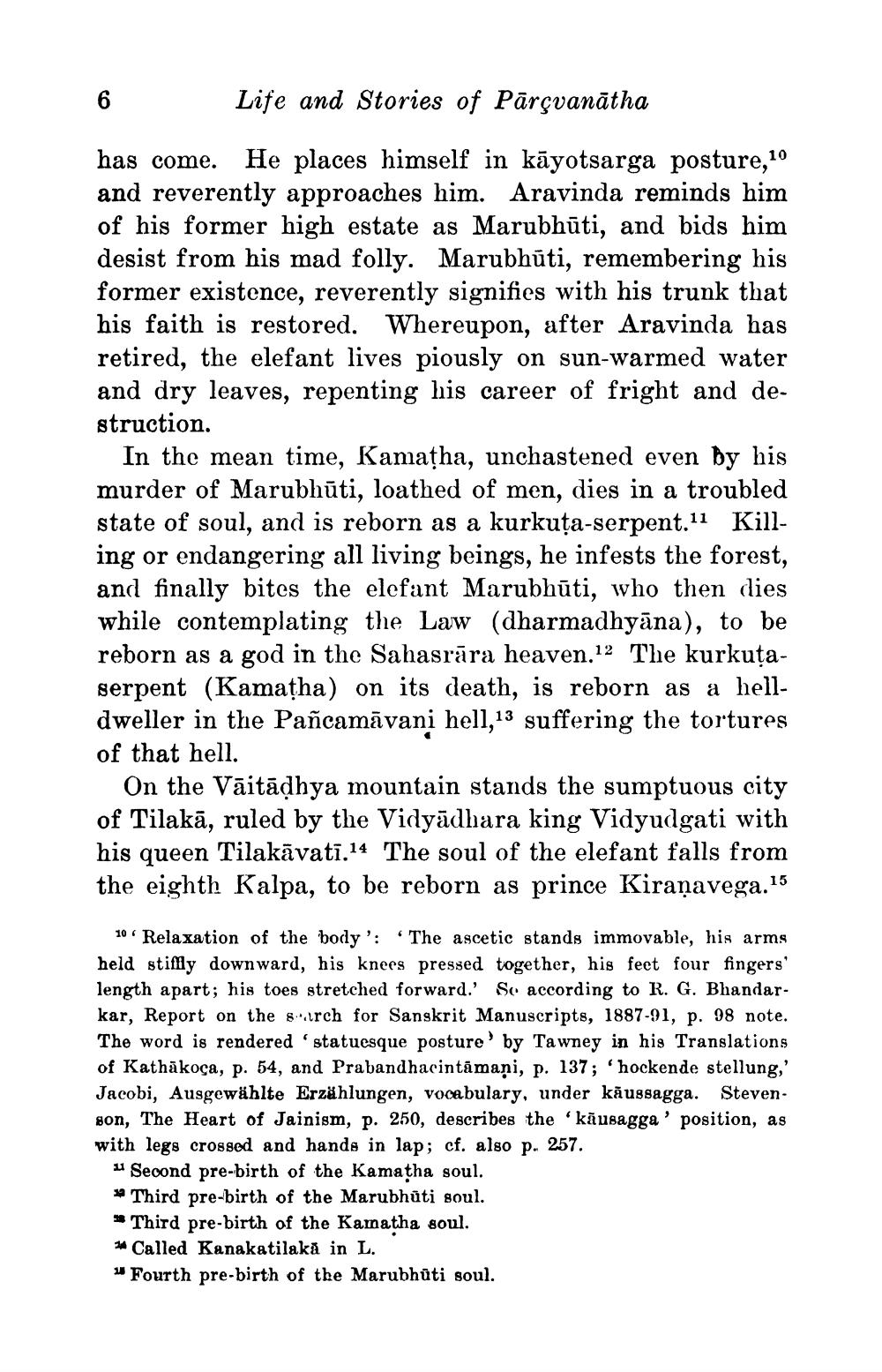________________
Life and Stories of Parçvanatha
has come. He places himself in kayotsarga posture,10 and reverently approaches him. Aravinda reminds him of his former high estate as Marubhūti, and bids him desist from his mad folly. Marubhūti, remembering his former existence, reverently signifies with his trunk that his faith is restored. Whereupon, after Aravinda has retired, the elefant lives piously on sun-warmed water and dry leaves, repenting his career of fright and destruction.
6
In the mean time, Kamatha, unchastened even by his murder of Marubhūti, loathed of men, dies in a troubled state of soul, and is reborn as a kurkuța-serpent.11 Killing or endangering all living beings, he infests the forest, and finally bites the elefant Marubhuti, who then dies while contemplating the Law (dharmadhyāna), to be reborn as a god in the Sahasrara heaven.12 The kurkuțaserpent (Kamatha) on its death, is reborn as a helldweller in the Pañcamavani hell,13 suffering the tortures of that hell.
On the Vaitaḍhya mountain stands the sumptuous city of Tilaka, ruled by the Vidyadhara king Vidyudgati with his queen Tilakāvatī.14 The soul of the elefant falls from the eighth Kalpa, to be reborn as prince Kiraṇavega.15
10 Relaxation of the body': The ascetic stands immovable, his arms held stiffly downward, his knees pressed together, his feet four fingers' length apart; his toes stretched forward.' So according to R. G. Bhandarkar, Report on the search for Sanskrit Manuscripts, 1887-91, p. 98 note. The word is rendered 'statuesque posture' by Tawney in his Translations of Kathakoça, p. 54, and Prabandhacintamani, p. 137; 'hockende stellung,' Jacobi, Ausgewählte Erzählungen, vocabulary, under kaussagga. Stevenson, The Heart of Jainism, p. 250, describes the 'kausagga' position, as with legs crossed and hands in lap; cf. also p. 257.
Second pre-birth of the Kamatha soul.
Third pre-birth of the Marubhuti soul. Third pre-birth of the Kamatha soul. Called Kanakatilaka in L.
"Fourth pre-birth of the Marubhuti soul.




